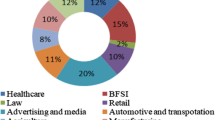Abstract
During mammogram screening, there is a higher probability that detection of cancers is missed, and more than 16 percentage of breast cancer is not detected by radiologists. This problem can be solved by employing image processing algorithms which enhances the accuracy of the diagnostic through image segmentation which reduces the misclassified malignant cancers. By employing segmentation, the unnecessary regions in the breast close to the boundary between the breast tissue and segmented pectoral muscle can be removed, therefore enhancing the accuracy the calculation as well as feature estimation. In-order to enhance the accuracy of classification, the proposed classifier integrates the decision trees and neural network into a system to report the progress of the breast cancer patients in an appropriate manner with the help of technology used in healthcare system. The proposed classifier successfully demonstrated that it achieved more accurate prediction when compared with other widely used algorithms, namely, K-Nearest Neighbors, Support Vector Machine and Naive Bayes algorithm.











Similar content being viewed by others
References
Magoulas, G. D., and Prentza, A., Machine learning in medical applications. In: Paliouras, G., Karkaletsis, V., Spyrpoulos, C. D. (Eds), Machine Learning and its Applications, Lecture Notes in Computer Science. Berlin: Springer-Verlag, 2010, 300–307.
Hsieh, S. L., Hsieh, S. H., Cheng, P. H. et al., Design ensemble machine learning model for breast cancer diagnosis. J. Med. Syst. 36:2841, 2012. https://doi.org/10.1007/s10916-011-9762-6.
Naghibi, S., Teshnehlab, M., and Shoorehdeli, M. A., Breast cancer classification based on advanced multi dimensional fuzzy neural network. J. Med. Syst. 36:2713, 2012. https://doi.org/10.1007/s10916-011-9747-5.
Murakami, Y., and Mizuguchi, K., Applying the nave Bayes classifier with kernel density estimation to the prediction of protein-protein interaction sites. Bioinformatics 26(15):1841–1848, 2010.
Peter, N., Enhancing random forest implementation in WEKA. In: Machine Learning Conference, 2005.
Levi, F., Bosetti, C., Lucchini, F., Negri, E., and La Vecchia, C., Monitoring the decrease in breast cancer mortality in Europe. Eur. J. Cancer Prev. 14(6):497–502, 2005.
Tyczynski, J. E., Plesko, I., Aareleid, T., Primic-Zakelj, M., Dalmas, M., Kurtinaitis, J., Stengrevics, A., and Parkin, D. M., EU member states: Mortality declining in young women, but still increasing in the elderly. Int. J. Cancer 112(6):1056–1064, 2004.
Saritas, I., Prediction of breast cancer using artificial neural networks. J. Med. Syst. 36:2901, 2012. https://doi.org/10.1007/s10916-011-9768-0.
Mehta, M., Agrawal, R., and Rissanen, J., SLIQ: A scalable parallel classifier for data mining. IBM Almaden Research Center, CA 95120.
Li, J. B., Yu, Y., Yang, Z. M. et al., Breast tissue image classification based on semi-supervised locality discriminant projection with kernels. J. Med. Syst. 36:2779, 2012. https://doi.org/10.1007/s10916-011-9754-6.
Nassif, H., Page, D., Ayvaci, M., Shavlik, J., and Burnside, E. S., Uncovering age-specific invasive and DCIS breast cancer rules using inductive logic programming. In: Veinot, T. (Ed.), Proceedings of the 1st ACM International Health Informatics Symposium (IHI ‘10). New York: ACM, 2010, 76–82.
Huang, M. L., Hung, Y. H., Lee, W. M. et al., Usage of case-based reasoning, neural network and adaptive neuro-fuzzy inference system classification techniques in breast cancer dataset classification diagnosis. J. Med. Syst. 36:407, 2012. https://doi.org/10.1007/s10916-010-9485-0.
Diz, J., Marreiros, G., and Freitas, A., Applying data mining techniques to improve breast cancer diagnosis. J. Med. Syst. 40(203), 2016. https://doi.org/10.1007/s10916-016-0561-y.
Suresh, A., and Varatharajan, R., Recognition of pivotal instances from uneven set boundary during classification. Multimed. Tools Appl., 2018. https://doi.org/10.1007/s11042-018-5905-9.
Issac Niwas, S., Palanisamy, P., Chibbar, R. et al., An expert support system for breast cancer diagnosis using color wavelet features. J. Med. Syst. 36:3091, 2012. https://doi.org/10.1007/s10916-011-9788-9.
Paulin, F., and Santhakumaran, A., Back propagation neural network by comparing hidden neurons: Case study on breast cancer diagnosis. Int. J. Comput. Appl. 2(4), 2010. (0975–8887).
Ganatra, A., Panchal, G., Kosta, Y., and Gajjar, C., Initial classification through back propagation in a neural network following optimization through GA to evaluate the fitness of an algorithm. International Journal of Computer Science and Information Technology 3(1):98–116, 2011.
Vapnik, V., and Vashist, A., A new learning paradigm: Learning using privileged information. Neural Netw. 22(5–6):544–557, 2009.
Mahmoudabadi, H., Izadi, M., and Menhaj, M. B., A hybrid method for grade estimation using genetic algorithm and neural networks. Comput. Geosci. 13:91–101, 2009.
Chattopadhyay, S., Kaur, P., Rabhi, F. et al., Neural network approaches to grade adult depression. J. Med. Syst. 36:2803, 2012. https://doi.org/10.1007/s10916-011-9759-1.
Author information
Authors and Affiliations
Corresponding author
Ethics declarations
Ethical responsibilities of authors
The authors follow the ethical information provided in the journal and hereby abide the same with the journal.
Conflict of interest
In accordance with all authors, we are reporting that there is no conflict of interest in the research paper.
Additional information
Publisher’s note
Springer Nature remains neutral with regard to jurisdictional claims in published maps and institutional affiliations.
This article is part of the Topical Collection on Systems-Level Quality Improvement
Rights and permissions
About this article
Cite this article
Suresh, A., Udendhran, R., Balamurgan, M. et al. A Novel Internet of Things Framework Integrated with Real Time Monitoring for Intelligent Healthcare Environment. J Med Syst 43, 165 (2019). https://doi.org/10.1007/s10916-019-1302-9
Received:
Accepted:
Published:
DOI: https://doi.org/10.1007/s10916-019-1302-9




